A runny nose is an unpleasant thing. Unfortunately, during the cold or flu season, many of us suffer from this ailment. But even less pleasant is sinusitis, into which a runny nose can flow if you do not pay attention to the state of health in time.
Content
Rhinitis and sinusitis: what's the difference
A runny nose can have a variety of causes, from allergies to hypothermia or pathogenic bacteria. In science and medicine, a runny nose is usually called the term "Rhinitis", from the Greek ("Rinos" - "Nose".)
Rhinitis is an inflammation of the nasal mucosa. The nature of this inflammation can be different, and it is best to be determined by a specialist. The inflammation is characterized by mucosal edema, discharge, and general malaise.
A common cold should not be confused with sinusitis. Here, with the disease, not only the mucous membrane suffers, but also the sinuses.

The paranasal sinus is a cavity in the bones of the skull filled with air. There are four types of them:
- Frontal (located in the frontal bone). Refers to paired, that is, there are two of them, arranged symmetrically.
- Ethmoid labyrinth (Paired sinus formed by ethmoid cells)
- Sphenoid sinus (unpaired, located in the area around the auricles)
- Maxillary or maxillary (Steam room, located in the upper jaw, on the sides of the nose).
Sinuses are also called sinuses, from Latin sinus paranasales.
Their purpose is multifaceted, it is protection from hypothermia of the eyeballs and roots of the teeth, and protection against traumatic influences, and partial participation in the formation of the timbre of the voice.
From the inside, the paranasal sinuses are lined with epithelial cells and filled with air. The epithelium secretes mucus to protect it from drying out, which is drained from the sinuses. In case of inflammation, swelling of the mucous membrane occurs, and the amount of mucus and fluid secreted also increases.
If the sinuses are involved in the process of inflammation of the nasal mucosa, the disease is called sinusitis.
What is sinusitis
Sinusitis is one of the types of sinusitis, in which there is inflammation of the maxillary or maxillary sinuses. The infection usually enters from the nasal mucosa and develops in the sinus. The internal cavity is filled with fluid, mucus or pus, the outflow of which is difficult due to swelling of the mucous membrane. The result of such processes is a deterioration in well-being, pain in the forehead and in the brow when changing the position of the head.
The main causes of the disease:
- Viruses;
- Bacteria;
- Allergic reaction;
- Injuries.
Often a person is not able to distinguish common rhinitis from sinusitis, but meanwhile there are differences, and they are significant. As well as the consequences of a neglected disease.
How is a runny nose different from sinusitis?
The course of the disease may initially be similar. The main signs are nasal congestion and discharge, fatigue, redness of the nose or bridge of the nose.
Due to the fact that few nerve endings are located in the cells lining the sinuses, a person may not immediately suspect sinusitis.
Symptoms of sinusitis
- Severe coryza. Does not stop or slightly decreases when taking medications.
- Weakness, fatigue. These symptoms are generally typical for any inflammation, they are also relevant for sinusitis.
- Increased body temperature. It is also a sign of inflammation.
- Headache, discomfort in the nose or forehead. Painful sensations when pressing or tapping in the area of the wings of the nose.
If you have these symptoms, this is a good reason for a visit to a doctor who can accurately determine the disease. Remember that the complications of sinusitis can be serious and pose a health hazard.
What are the drugs for sinusitis?
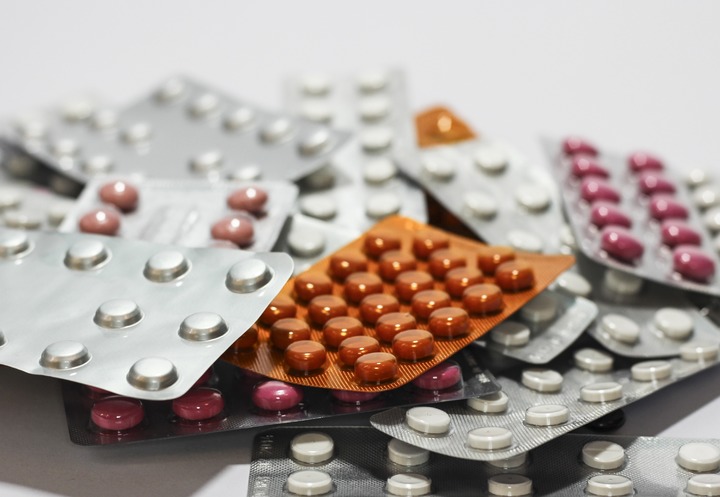
By release form
- Tablets, capsules;
- Sprays, drops, ointments, solutions for inhalation
Also have a common name intranasal drugs, i.e. introduced into the nasal cavity. It is generally accepted that sprays are more effective at nebulizing the drug due to the pressure and small particle size.
- Solutions for injection
By action
Anticongestants and adrenomimetics
They have a vasoconstrictor effect, relieve swelling, and reduce discomfort in the nasopharynx. In addition, they help to reduce mucus secretion.
Antibacterial agents
If a doctor determines that a bacterial infection is the cause of sinusitis, antibiotics are prescribed. Antimicrobial drugs stop the growth of microorganisms, suppress their vital activity. Further, the natural forces of the body come into force, which removes dead bacteria and suppresses the growth of new ones on its own.
Based on this ability, all antibacterial agents are divided into two groups:
- Bactericidal (killing bacteria);
- Bacteriostatic (inhibit the ability of bacteria to multiply).
It should be remembered that the use of antibiotics can suppress beneficial microflora. Doctors are well aware of this, therefore, during treatment, they will also prescribe preparations with ready-made microflora cultures. After the termination of the course, the beneficial microflora after a certain time is restored on its own.
Antimicrobial drugs most often do not work against viruses.
Mucolytics
Medicines that thin phlegm and make it easier to remove. With inflammation, the mucus in the sinuses becomes thick and cannot go out on its own. As a result, bacterial contamination intensifies. When mucolytic agents are used, the consistency of the discharge becomes liquid, and they are naturally excreted from the nasal passages or maxillary sinuses. Such preparations are available in the form of tablets or syrups, as well as sprays for topical use.
Anti-inflammatory
Any inflammation is accompanied by edema and fever, local or at the site of the inflammatory process. So the body gets confused to fight the infection, while protecting the affected organ, and signaling this to its owner. Anti-inflammatory drugs are aimed at relieving the symptoms of inflammation, first of all, it is a decrease in temperature and a decrease in edema. Also, these funds have an analgesic effect, that is, they reduce pain at the site of inflammation. Often anti-inflammatory drugs are prescribed in combination with others, such as vasoconstrictors.
The best remedies for the treatment of sinusitis
Intranasal
Naftizin

A popular brand used in the complex treatment of sinusitis and rhinitis. Available as drops and spray. It is in high demand among buyers due to the low price and a large selection of companies producing this drug.
Active ingredient: Naphazoline. It belongs to alpha2-adrenergic agonists. When used, it narrows the vessels of the nasal mucosa, thereby relieving swelling and reducing hyperemia. As a result, it facilitates nasal breathing and improves the patency of the nasal passages.
Method of application: Intranasal, adults and children over 15 years old, 1-3 drops of 0.05% - 0.1% of the product, 3-4 times during the day
Restrictions: Contraindicated in children under 15 years of age.
Advantages:
- Fast action;
- Low price.
Disadvantages:
- May cause dryness of the mucous membranes;
- With prolonged use, the effectiveness of the action decreases.
Sanorin
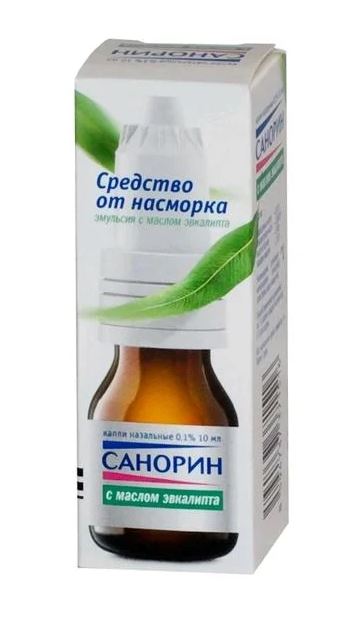
Another drug that uses Naphazoline as an active ingredient. Available in the form of an emulsion. It additionally contains eucalyptus oil, which has an antiseptic effect, improves blood circulation. However, in this case, the amount of oil in the composition is insignificant in order to have a therapeutic effect, and it is used more to improve the organoleptic properties of the drops.
Sanorin should be used intranasally, 2-3 drops in each nostril, 2-3 times a day.
The remedy is contraindicated in children under 15 years of age.
Advantages:
- Fast therapeutic effect;
- Low price;
- Eucalyptus oil in the composition;
- Longer-lasting effect in comparison with Naphthyzin.
Disadvantages:
- With prolonged use, reduces the effectiveness;
- May cause dryness and burning of the nasal mucosa.
Xymelin
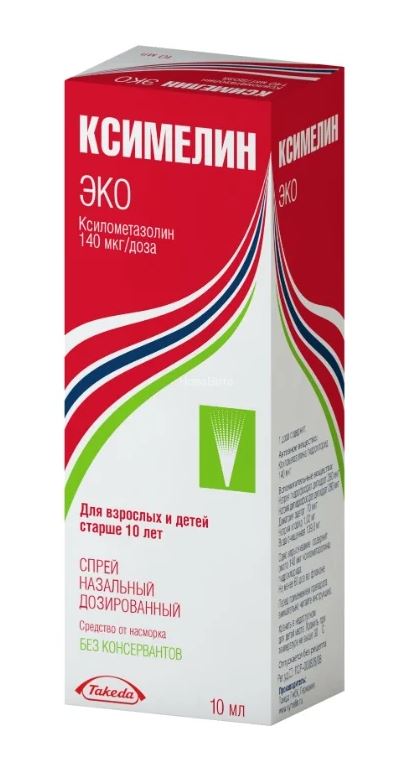
Nasal spray. Contains xylometazoline.
Xylometazoline was proposed as a replacement for Naphazoline. Its molecule is similar in structure to the aforementioned agent. The key difference is that the drug is absorbed faster in the body and is practically not absorbed into the bloodstream. Belongs to the class of alpha2-adrenergic agonists. When applied, it narrows the capillaries in the nasal cavity, reduces edema, and facilitates nasal breathing. The effect occurs 2-3 minutes after spraying and lasts for several hours.
It is used in the treatment of rhinitis, sinusitis, including sinusitis. Does not accumulate in blood plasma.
Method of application: Intranasal, 2 times a day. No more than 7 days in a row.
For children, it is produced separately, with a reduced concentration.
Contraindicated in pregnant women.
Advantages:
- Available everywhere;
- The effect of the application comes after a short time.
Disadvantages:
- There may be unpleasant side effects in the form of dryness of the nasopharynx;
- Poorly compatible with a large number of drugs, read contraindications carefully.
Nazivin
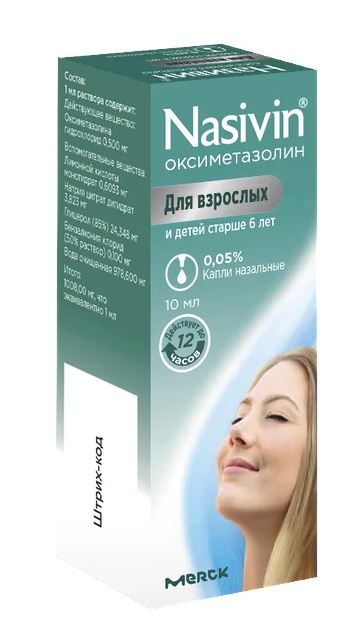
It is prescribed for vasomotor and allergic rhinitis, as well as for the complex treatment of acute respiratory viral infections, sinusitis, including sinusitis.
Active substance: oxymetazoline
It is an alpha-adrenergic agonist. When applied topically, it narrows the capillaries in the nasal cavity, reduces swelling of the mucous membrane and helps to facilitate nasal breathing. Has no systemic effect on the body.
It is produced in the form of drops, taken intranasally, 2-3 times a day, 1-2 drops in each nasal passage.
Approved for use during pregnancy.
Allowed for children in a reduced dosage (issued separately, indicating the age).
Advantages:
- Has a long-lasting effect;
- Does not irritate the mucous membranes;
Disadvantages:
- A temporary decrease in the ability to perform operations requiring increased concentration is possible.
Vibrocil
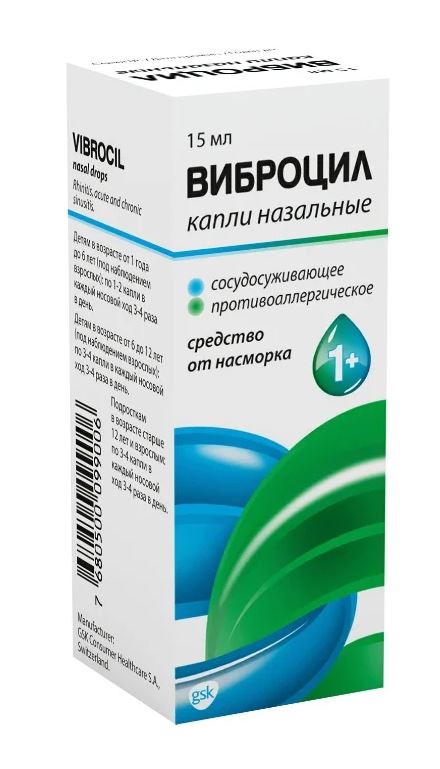
Nasal spray.
Active ingredients: Phenylephrine and Dimetinden
Phenylephrine belongs to the group of alpha1-adrenostimulants. When applied topically, it has a decongestant effect, facilitates nasal breathing, reduces swelling of the nasal mucosa. Has no systemic effect on the body.
Dimetinden belongs to the group of antihistamines and, together with Phenylephrine, reduces discomfort in the nasal cavity, facilitates the release of mucus from the sinuses and facilitates breathing.
Indications for the use of Vibrocil are quite wide, these are, first of all, allergic and vasomotor rhinitis. In the treatment of sinusitis, it is used in combination with other drugs.
Available in the form of drops, spray and gel.
Contraindicated in children under one year old, not recommended for pregnant and lactating women.
It is used intranasally.
Children from 1 to 6 years old: 1-2 drops 3-4 times a day.
Children over 6 years old and adults: 3-4 drops 3-4 times a day.
The duration of admission should not exceed 7 days. If there is no improvement, a second visit to the doctor is necessary.
Advantages:
- Complex long-term action due to two active ingredients.
Disadvantages:
- High price;
- Systemic vasoconstrictor action.
Local anti-inflammatory therapy (intranasal corticosteroids)
GCS - short for "synthetic glucocorticosteroids". These are steroid hormones that have anti-inflammatory, anti-allergic, anti-shock and immunosuppressive effects on the body.
They are prescribed for the treatment of the acute stage of sinusitis, characterized by a violent inflammatory process, a large amount of secretion in the maxillary sinuses, significant swelling of the epithelium of the sinuses and nasopharyngeal mucosa.
Nasobek
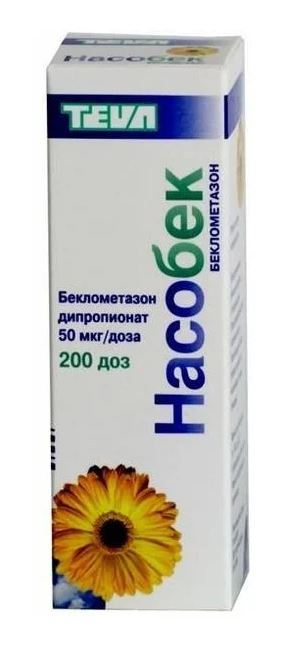
The active ingredient is the corticosteroid beclomethasone. It is considered potent and is prescribed by a doctor.
The drug has an anti-inflammatory and antiallergic effect, reduces the formation of secretions in the sinuses, reduces swelling, facilitates the elimination of toxins from the focus of infection.
The drug is produced in the form of a nasal spray. It is used intranasally, 3 to 4 times a day, in doses of 50 mcg. One bottle contains 200 doses of 50 mcg.
The action of the remedy does not appear immediately. From the moment of admission to the beginning of the action, it takes from 16 hours to a day. Beclomethasone has a cumulative effect, after taking the drug, its effect lasts for several days, until it is removed from the body.
Advantages:
- Effective anti-inflammatory action;
- Low price.
Disadvantages:
- The effect appears after a while.
Fliksonase
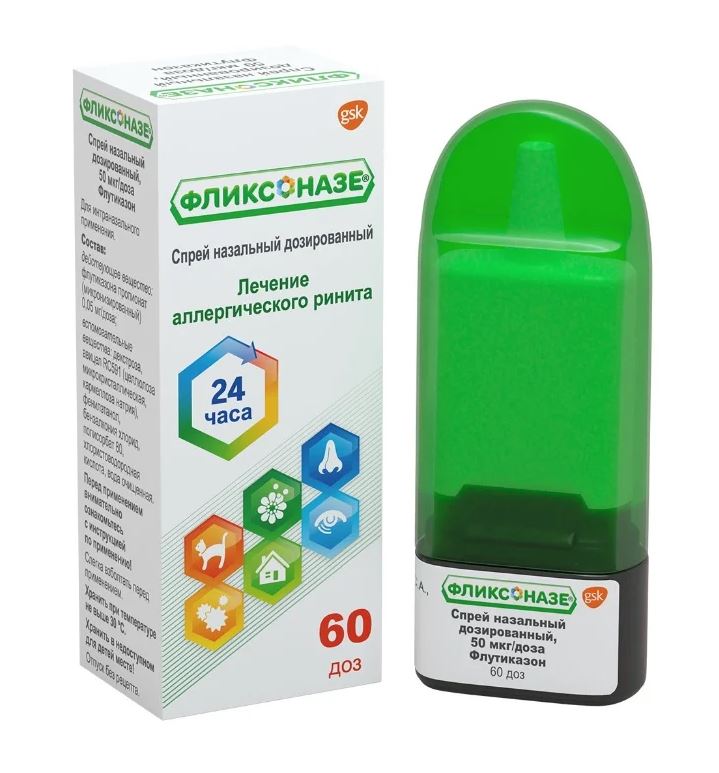
It is used in the complex therapy of sinusitis. Before use, be sure to consult a specialist.
The active ingredient is fluticasone.
It has immunosuppressive and anti-inflammatory effects. Reduces mucus secretion in the sinuses, reduces swelling of the mucous membrane of the upper respiratory tract.
Recommended for children from 4 years old.
Available in the form of a nasal spray. The dose is 50 mcg, 2 times a day in each nasal passage. When the effect occurs, the dosage should be reduced.
One bottle of the product contains 60 doses.
Advantages:
- Fast and gentle action, the effect is felt 60-90 minutes after the first use;
- There were no significant side effects.
Disadvantages:
- High price;
- A large number of contraindications.
Avamis
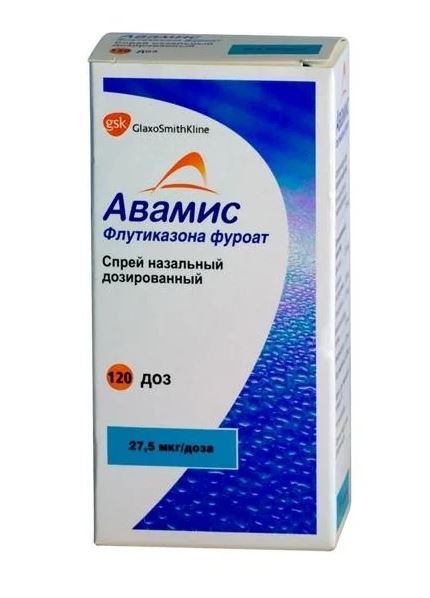
The next brand in the review also contains fluticasone. Produced in the form of a spray by a British pharmaceutical concern.
It is often prescribed by doctors for the complex treatment of sinusitis.
The action of the drug is standard for glucosteroid hormones. Avamis has a pronounced anti-inflammatory effect.
It can be prescribed to young patients from two years old.
Available in 30, 60 and 120 doses. One dose contains 27.5 mgm of the substance.
The course of treatment is 7 days. The effect of the intake occurs 7-9 hours after the first application and lasts for one and a half to two days after the end of the intake.
Advantages:
- Pronounced anti-inflammatory effect;
Disadvantages:
- High price.
Antibacterial
Polydexa
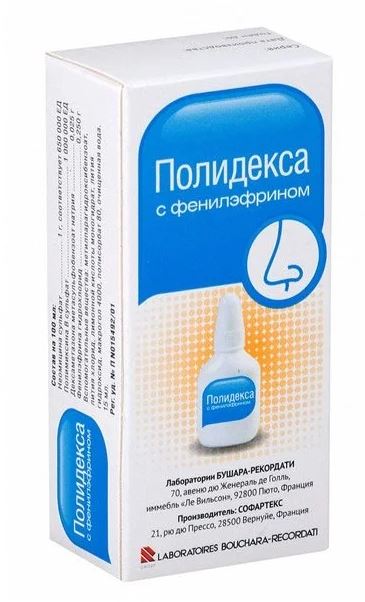
A complex antibacterial drug containing two antibiotics - neomycin and polymyxin B. In addition to antibiotics, an adrenostimulant phenylephrine is added to the spray, which helps to relieve puffiness. Produced by the French company Bouchard Ricordati Laboratory.
The indication for use is the revealed presence of pathogens.
Polydex should be taken strictly in accordance with the instructions for use.
The course of treatment lasts 7-10 days, but no more than 10.
Advantages:
- High antimicrobial effectiveness;
Disadvantages:
- Not identified.
- Side effects of taking antibiotics.
Miramistin

Antibacterial drug with a wide spectrum of action. It is used to flush the sinuses and nasal passages. It has excellent anti-inflammatory properties.
Designed and manufactured in Russia. A distinctive feature of Miramistin is that it affects all types of pathogens, without causing them resistance after the first use, in other words, they do not develop resistance to it, and when repeated, the agent works just as effectively.
Available as a solution. It is used intranasally.
Advantages:
- An extremely small number of contraindications;
- High antimicrobial effectiveness;
- Low price.
Disadvantages:
- Not identified.
Mucolytics
Medicines designed to reduce the viscosity of mucus and phlegm in the sinuses. When phlegm becomes thick, it cannot be cleared out of the sinuses on its own, which aggravates inflammation and causes pain. Mucolytic drugs break down mucus molecules, making it less viscous. Further, the body naturally, or under the influence of other means prescribed for treatment, is able to remove it from the body.
Ambrobene
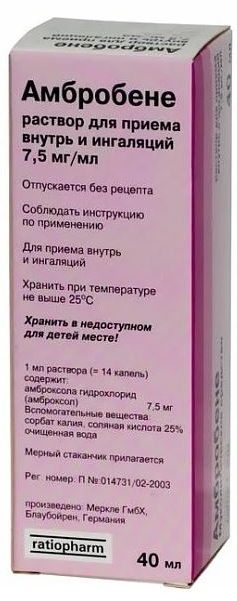
Mucolytic agent for a wide range of applications. It is widely used in diseases of the respiratory system, bronchitis. With sinusitis, it is also used to facilitate the removal of mucus from the maxillary sinuses.
Available in the form of tablets, syrups, solutions for inhalation.
For the best effect, it is recommended to drink plenty of fluids while taking the medicine, as the mucolytic effect manifests itself faster and stronger.
Approved for use in children from one year old.
Advantages:
- A wide range of dosage forms;
- Persistent mucolytic effect.
Disadvantages:
- Not detected.
Sinuforte

Solution for intranasal use.
The peculiarity of Sinuforte is that plant raw materials are used for its production, the extract of the cyclamen plant tubers.
Under the influence of its enzymes, after taking it, the secretion from all sinuses is enhanced. The epithelium lining the sinus wall increases mucus production. At the same time, the agent has a decongestant effect, which makes possible the natural release of secretions from the sinuses.
One of the effects of the reception is a slight burning sensation in the nasal passages and reflex sneezing, possibly lacrimation.
It is recommended to use Sinuforte once a day.
Advantages:
- Natural composition;
- Fast effect after ingestion.
Disadvantages:
- High price.
Bromhexine

It is used in combination in the treatment of sinusitis, in the form of a solution for inhalation or in the form of tablets.
When taken, it reduces the viscosity of bronchial secretions, and also affects the secretion that accumulates in the sinuses. The action of the drug does not occur immediately. Depending on the characteristics of the organism, the effect may appear 2-4 days after the start of the intake.
When taking, the dosage indicated in the instructions should be strictly observed.
Advantages:
- Doesn't cause irritation;
- Effectively affects the sinuses and bronchi;
- Low price.
Disadvantages:
- Not detected.
Recommendations for the treatment of sinusitis
In fact, there is only one recommendation.
Do not self-medicate. The effect of thoughtless use of antibiotics or corticosteroids can be the opposite.
It is also highly discouraged, if sinusitis is suspected, to warm up the sore spot - this will only intensify the inflammation and complicate the treatment.
If you have any tips for treating sinusitis, share them in the comments.













